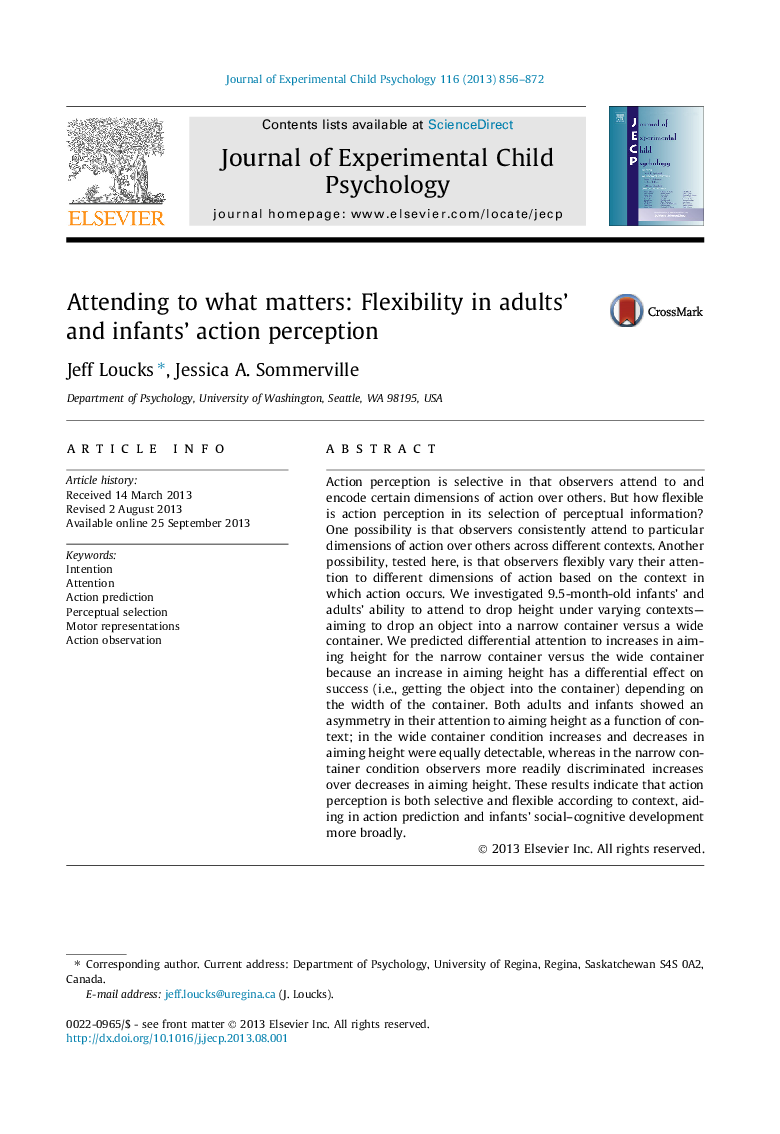| Article ID | Journal | Published Year | Pages | File Type |
|---|---|---|---|---|
| 10453045 | Journal of Experimental Child Psychology | 2013 | 17 Pages |
Abstract
Action perception is selective in that observers attend to and encode certain dimensions of action over others. But how flexible is action perception in its selection of perceptual information? One possibility is that observers consistently attend to particular dimensions of action over others across different contexts. Another possibility, tested here, is that observers flexibly vary their attention to different dimensions of action based on the context in which action occurs. We investigated 9.5-month-old infants' and adults' ability to attend to drop height under varying contexts-aiming to drop an object into a narrow container versus a wide container. We predicted differential attention to increases in aiming height for the narrow container versus the wide container because an increase in aiming height has a differential effect on success (i.e., getting the object into the container) depending on the width of the container. Both adults and infants showed an asymmetry in their attention to aiming height as a function of context; in the wide container condition increases and decreases in aiming height were equally detectable, whereas in the narrow container condition observers more readily discriminated increases over decreases in aiming height. These results indicate that action perception is both selective and flexible according to context, aiding in action prediction and infants' social-cognitive development more broadly.
Related Topics
Social Sciences and Humanities
Psychology
Developmental and Educational Psychology
Authors
Jeff Loucks, Jessica A. Sommerville,
